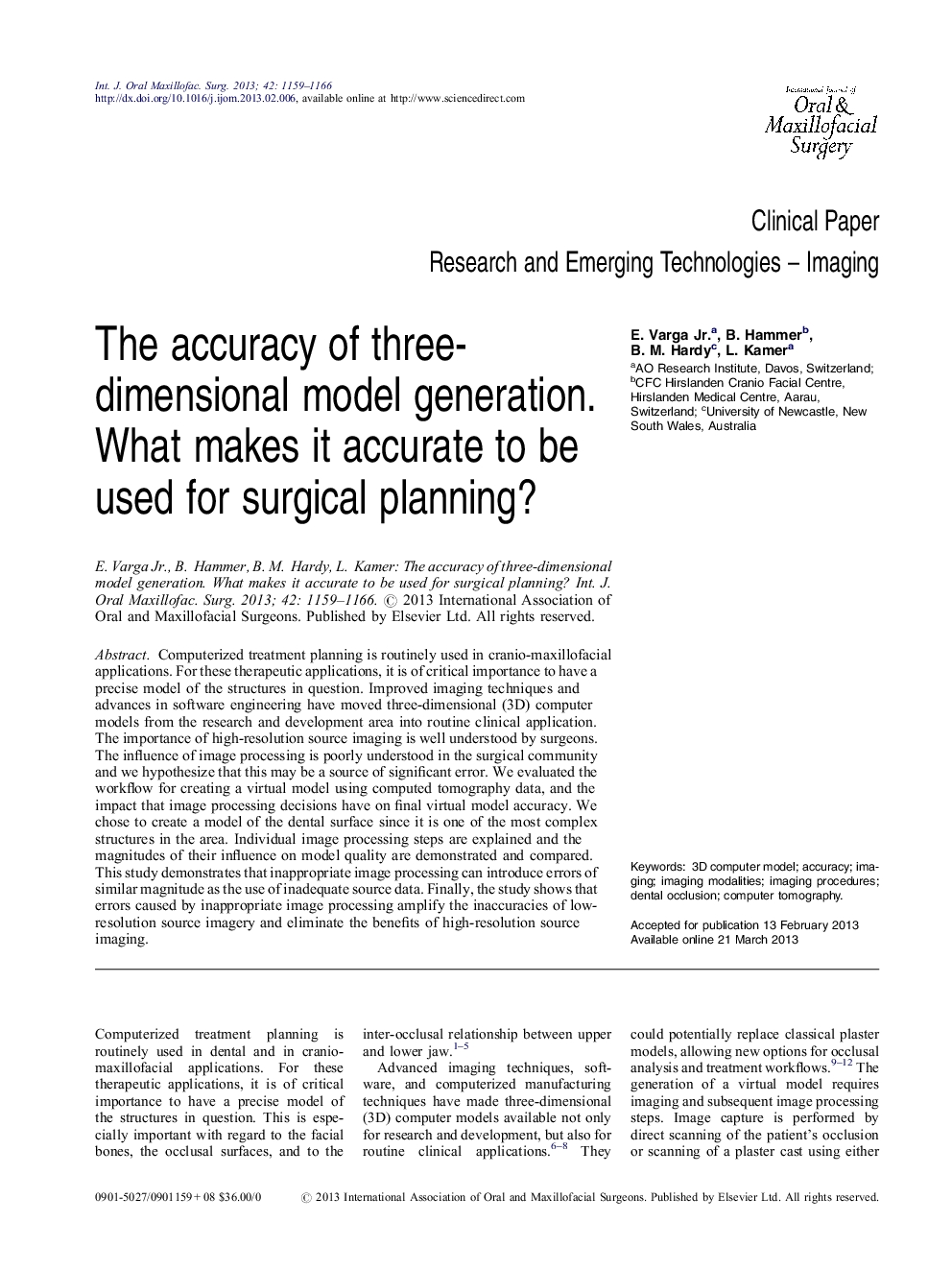| Article ID | Journal | Published Year | Pages | File Type |
|---|---|---|---|---|
| 3132984 | International Journal of Oral and Maxillofacial Surgery | 2013 | 8 Pages |
Computerized treatment planning is routinely used in cranio-maxillofacial applications. For these therapeutic applications, it is of critical importance to have a precise model of the structures in question. Improved imaging techniques and advances in software engineering have moved three-dimensional (3D) computer models from the research and development area into routine clinical application. The importance of high-resolution source imaging is well understood by surgeons. The influence of image processing is poorly understood in the surgical community and we hypothesize that this may be a source of significant error. We evaluated the workflow for creating a virtual model using computed tomography data, and the impact that image processing decisions have on final virtual model accuracy. We chose to create a model of the dental surface since it is one of the most complex structures in the area. Individual image processing steps are explained and the magnitudes of their influence on model quality are demonstrated and compared. This study demonstrates that inappropriate image processing can introduce errors of similar magnitude as the use of inadequate source data. Finally, the study shows that errors caused by inappropriate image processing amplify the inaccuracies of low-resolution source imagery and eliminate the benefits of high-resolution source imaging.
